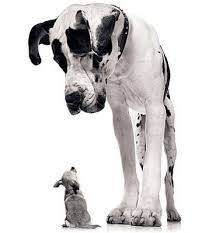

And they just may be right. But the truth is, Big Data can also be expensive, cumbersome, and intimidating. Since most of us got into marketing because we had a knack for language and stories—and oftentimes an aversion to anything remotely resembling math—we must rely on data scientists or engineers to help us even access our data, not to mention make much sense of it.
The good news is that in many cases, Big Data isn’t always necessary. Sure, it would be great to be able to analyze billions of actions from millions of consumers in order to understand our audiences better, but it’s often more practical to start with smaller subsets of data and work your way up to Big Data incrementally.
This is where Small Data comes in. Small Data is manageable. Small Data is simple. Small Data is, well, “small.” For instance, if all I really need to know is which subset of my customers is most likely to respond to my VIP campaign, Small Data lets me create a list of users who have spent more than $250 over the past 30 days. Or if I want to know which channels (mobile, email, web, etc.) a customer prefers, Small Data can tell me whether that specific customer has responded more often to emails or a push notifications in the past.
Allen Bonde of the Small Data Group has become one of the foremost thinkers on Small Data, and he describes it as “the last mile of big data,” explaining that it “connects people with timely, meaningful insights (derived from big data and/or ‘local’ sources), organized and packaged – often visually – to be accessible, understandable, and actionable for everyday tasks.”
Small Data relies on the data you already have in place to help you make smarter decisions regarding your targeting, messaging, and campaign strategies. It does not require extensive scrubbing or transformation of large piles of data, but rather a simple analysis of the data points that really, truly matter to what you are trying to accomplish.
Proving the value of Big Data and getting executive sign-off for Big Data analysis tools can often be tricky. But Small Data allows marketers to start small, demonstrate success, and grow their business intelligence efforts over time. It allows you to prove that data and analytics can indeed help drive business results and improve your company’s Key Performance Indicators, and that it doesn’t require a huge commitment up front.
Small Data also does not require that you hire teams of data scientists to help make sense of your company’s datasets, nor does it require extensive engineering or IT resources just to extract your data from wherever it happens to sit. Small data can typically be accessed quickly and easily with the help of simple solutions currently on the market.
If ROI is what you’re after, Small Data is much less expensive than Big Data, so even though Big Data might be able to deliver a better return over the long haul, Small Data will help you break even on your investment much faster.
What is critical is that you have access to data that is both understandable and actionable. The right data can help you make important decisions such as what segments of users should receive which messages, what channel (mobile, email, etc.) a user is most likely to respond on, which campaign to prioritize if a person qualifies for more than one over a certain period of time, and more.
These decisions will help you deliver more targeted, more personalized and all-around more intelligent marketing campaigns to your customers, and you don’t need Big Data analytics to help you make them. All you need is an easy-to-use tool and enough data points to get you started.
Let the Small Data revolution begin!